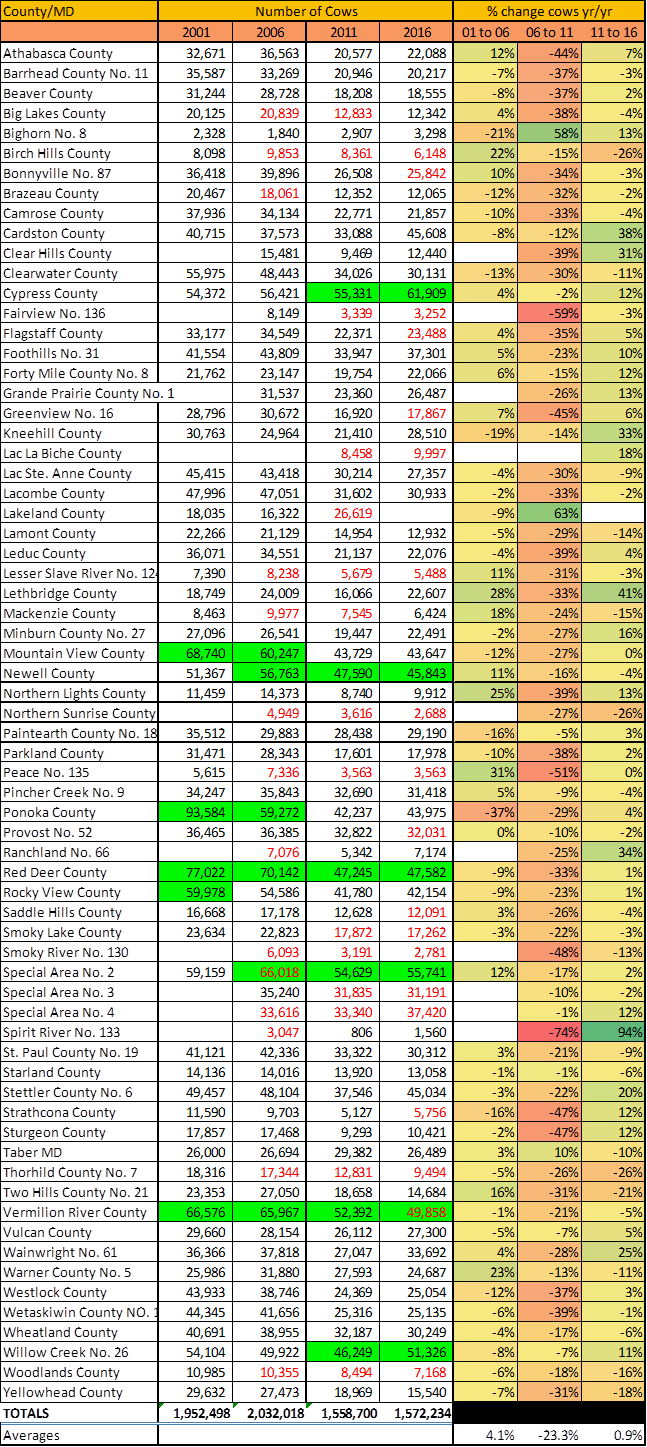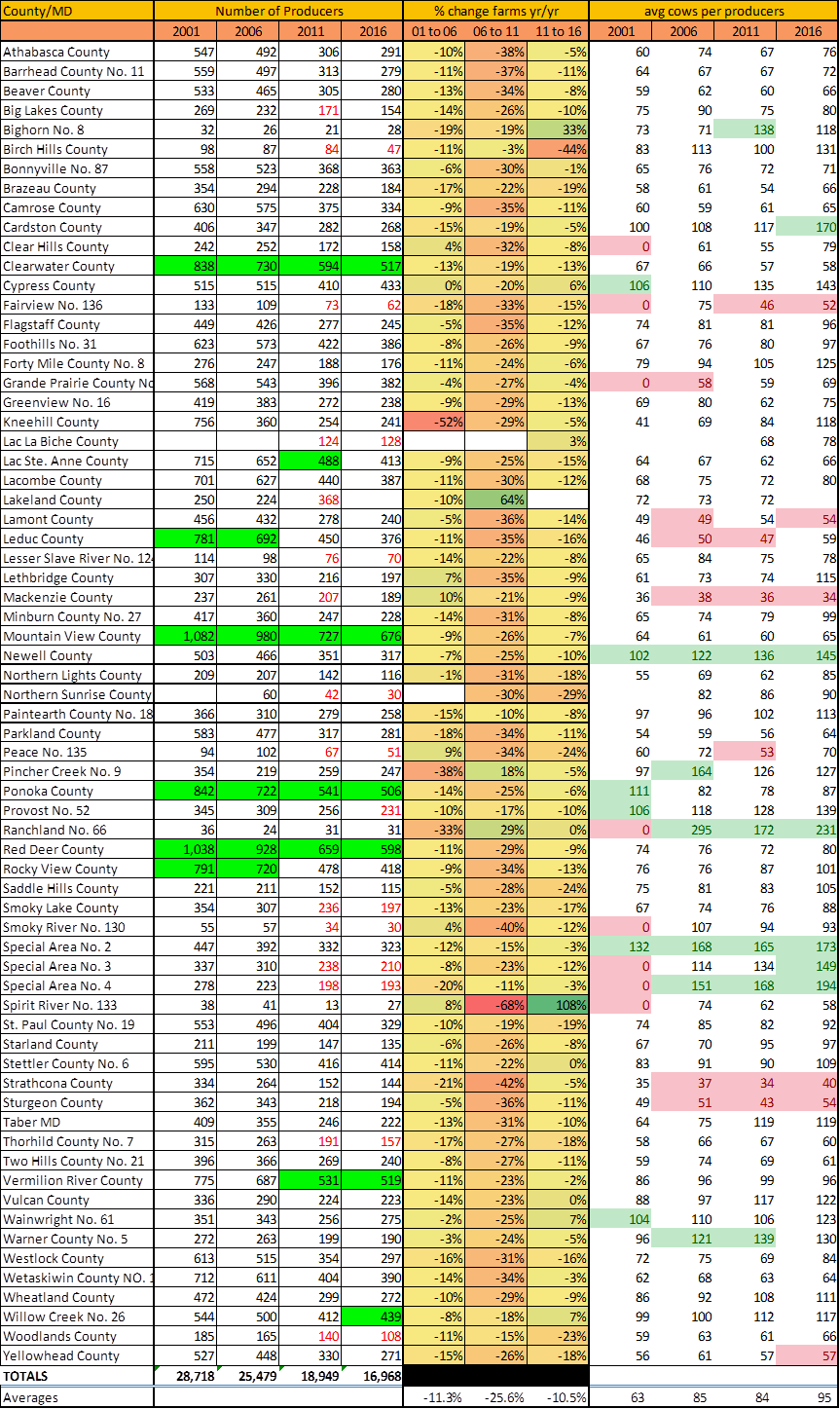| | While the Alberta cow herd has stopped shrinking, it has not yet rebounded back.
.
“The positive returns for the cow/calf producers over the last few years indicates the Alberta cow herd has finally stopped shrinking,” says Herman Simons, farm business management specialist, Alberta Agriculture and Forestry. “In fact, the total beef cow numbers for 2016 show a small increase of about 13,500 head as compared to 2011.”
The largest reduction in cows since the 2006 census inventory was in the Edmonton-Calgary corridor in 2011.
“Since then, this region has rebounded somewhat while the North-East and the West have continued to shrink in total head of cows,” says Simons. “The southern region (all counties below Calgary) seems to have rebounded the best – however, this region also saw the lowest reduction in numbers. The south had a reduction of 48,000 head in 2011, as compared to 2006, which is ‘only’ an 11% reduction as compared to most of the rest of Alberta (Peace, West, North-East and the Edmonton-Calgary corridor) which saw cow herds reduce between 28 and 37% in the same period.”
Simons says it is welcome seeing some stability, and even a minimum amount of growth, in a sector that plays such an important role in the Alberta economy. “All regions (other than the West and North-East) have seen an increase of cow numbers since 2011. Most of that occurred in the South (8% increase from 2011) and East (5% increase from 2011).”
At the same time, he says, the number of farms is reducing. “This decline seems to be faster for the beef sector in Alberta as compared to the average of all Canadian farms. There was a reduction of just over 10% of Alberta cow/calf producers in 2016 from 2011, as compared to the Canadian average of about 6% for the same period for all farmers.”
This reduction in the number of farms means herds are getting larger. In the last 15 years, the average herd size has increased by 50% from 63 cows to 95 cows per farm. There is a large difference between the different counties. Larger farms are found in the counties of Ranchland No. 66 (average herd size of 231 cows), Special Areas 2 & 4 (173 & 194 head respectively) and Cardston County (170 head). The counties with on average the smallest herd size are Mackenzie (34 head), Strathcona (40 head), Fairview (52 head), Lamont and Sturgeon Counties (54 head each).
Simons says cows are also moving away from their traditional areas. “For instance, the counties along the Hwy 2 corridor between Edmonton and Calgary have seen a drop of close to 40% in number of cows since 2001, when almost 500,000 head were grazing in this region, to just over 300,000 in 2016. High land value and improved crop revenue are likely to have played major roles in this.”
Southern Alberta seems to be one of the exceptions to this as cow numbers have rebounded to pre-BSE (bovine spongiform encephalopathy) levels of about 398,000 head and are almost at 404,000 head in 2016. “The current challenges related to the bovine tuberculosis (TB) issue are not included in these numbers, as TB became an issue after the census data was collected. The counties of Cardston and Cypress are notable as the cow herd increased from 2001 levels by about 12,500 head to just over 107,500 total in 2016. With almost 62,000 beef cows, Cypress County had the highest numbers in Alberta in 2016.”
Eastern Alberta has mostly recovered in cow numbers as well. The current numbers are at about 374,000 head in 2001, down to just over 371,000 in 2016.
“The only other region, other than Southern Alberta, that has seen an increase in cow numbers is the Peace, likely due to lower land values and the availability of more marginal land. Cows numbers there have increased by about 15% from 2001 to about 123,000.”
As always, says Simons, it’s clear that profitability is the driving force behind decreases and increases of production. “Having said that, it also seems that other factors are at play that determine the location of the beef herd. Grassland is competing with crop production and it seems that where good productive dryland is available cows are slowly moving away as that grassland is converted into crop. These animals are instead moved towards areas where there is more low cost, marginal land that is more suitable for grass and forage production than for crop.”
 . .


Alberta Region Maps
Click on image to view larger map
Contact:
Herman Simons
403-742-7571 |
|